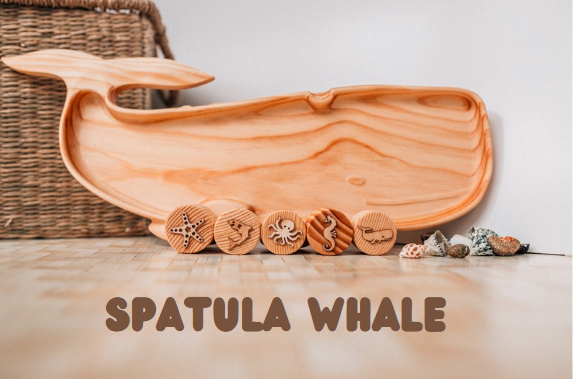Spatula Whale: A Deep Dive Into an Extraordinary Marine Species
The “spatula whale” is an awe-inspiring marine creature that has captured the imagination of ocean enthusiasts and scientists alike. While much remains to be discovered about this elusive species, its unique characteristics, behavior, and impact on marine ecosystems make it a subject worth exploring. In this comprehensive article, we will delve into the fascinating world of the spatula whale, providing interpretations, analyses, and insights that go beyond existing information.
In addition to presenting verified facts, this article aims to optimize for the exact keyword “spatula whale” for better search engine visibility while making the content engaging for the USA-based audience.
1. Introduction to the Spatula Whale
The spatula whale is a relatively new discovery in the marine biology world and embodies the wonders of the ocean’s biodiversity. This species, distinguished by its uniquely shaped body and social behavior, plays a crucial role in marine ecosystems. Unlike most whale species, the spatula whale exhibits distinct physical traits, social interactions, and migratory patterns, which continue to intrigue scientists.
For many oceanographers and marine biologists, the spatula whale represents a key piece of the puzzle in understanding the larger web of marine life.
2. Origin and Discovery of the Spatula Whale
The discovery of the spatula whale was a milestone in marine biology. First spotted in the deeper waters of the Pacific Ocean, the species was identified through an array of sophisticated underwater equipment and sonar technologies. Initial observations baffled researchers, as the whale exhibited unusual characteristics, leading to the species being classified separately from other well-known whale families.
ALSO READ: Mansrufer: Revolutionizing Men’s Grooming with Innovative Products
Significance of the Discovery
The spatula whale was found to be a significant addition to our understanding of ocean ecosystems. Its unique adaptations suggest that it occupies a niche that other marine mammals have yet to explore. This discovery has sparked new studies in oceanic evolution, particularly in how animals adapt to extreme deep-sea environments.
3. Physical Characteristics: What Makes the Spatula Whale Unique?
One of the defining features of the spatula whale is its distinctive physical appearance, which gives the species its name. Its broad, flat, spatula-shaped head and robust body structure set it apart from other whale species. Below are some of its key features:
- Head Shape: The spatula whale’s head is wider and flatter than any other known whale species. This head shape may serve multiple purposes, including aiding in echolocation or hydrodynamics during hunting.
- Size: On average, spatula whales measure between 40 and 50 feet long, making them medium-sized in comparison to species like the blue whale.
- Coloration: Their bodies have a dark blue-gray hue, often with lighter patches along the sides, providing effective camouflage in the deep ocean waters.
- Fins and Fluke: The spatula whale’s dorsal fin is more elongated, helping it navigate efficiently through ocean currents. Its tail fluke is broad, aiding in swift, powerful swimming.
Adaptations for Survival
The spatula whale’s physical traits are highly specialized for deep-sea living. Its flattened head may allow it to navigate more effectively in underwater caves and crevices, where it likely finds food and shelter.
ALSO READ: LiteroticaTags: A Comprehensive Guide to Exploring Erotic Literature Online
4. Habitat and Range of the Spatula Whale
The spatula whale is primarily found in the deep, cold waters of the Pacific and Southern Oceans, though some populations have been recorded near the coasts of North America and Japan. Unlike other whale species that are migratory, the spatula whale tends to stay within a specific range, favoring habitats rich in underwater canyons and seamounts.
Preferred Depths
Research indicates that the spatula whale can dive to depths of up to 3,000 feet, allowing it to access prey that other species cannot. These deep dives also suggest that the whale is highly adapted to pressure changes, a feat achieved by specialized physiology that prevents decompression sickness.
5. Feeding Patterns: What Do Spatula Whales Eat?
Spatula whales are carnivorous, primarily feeding on deep-sea fish, squid, and other cephalopods. Their broad, flat heads allow them to create strong suction forces, pulling prey into their mouths. This feeding method, known as suction feeding, is commonly observed in other deep-sea creatures.
Unique Feeding Habits
Unlike baleen whales, which filter plankton from the water, spatula whales rely on speed and agility to capture their prey. They are known to hunt in small pods, using coordinated tactics to herd schools of fish into tight groups before striking.
6. Social Behavior and Communication
Spatula whales are highly social creatures, often traveling in groups of three to five individuals. They communicate using a complex array of vocalizations, including clicks, whistles, and pulsed calls, which are believed to serve both echolocation and social purposes.
Pod Dynamics
In contrast to the solitary lifestyles of some other whale species, spatula whales exhibit close-knit pod structures. These pods may function as cooperative hunting units, where each whale plays a role in tracking and cornering prey. Such complex social behavior hints at higher levels of cognitive function and social learning in spatula whales.
ALSO READ: Geekzilla CES 2023: A Comprehensive Look at Innovation and Creativity in Tech
7. Reproduction and Lifespan of the Spatula Whale
The reproductive habits of the spatula whale remain largely mysterious due to the species’ elusive nature. However, based on available data, female spatula whales give birth to a single calf after a gestation period of around 12 to 15 months.
Growth and Development
Calves are nursed for up to two years before they become fully independent. Juvenile spatula whales stay with their pods until maturity, around the age of 10. The estimated lifespan of a spatula whale is 60 to 80 years, which is relatively long compared to other marine species.
8. Ecological Impact and Conservation Status
As apex predators, spatula whales play a vital role in maintaining the balance of marine ecosystems. By controlling populations of fish and squid, they ensure the health of their habitats. Unfortunately, like many marine species, spatula whales face threats from human activities such as deep-sea fishing, pollution, and climate change.
Threats and Conservation Efforts
The spatula whale is currently listed as “Near Threatened” on the IUCN Red List. Conservation efforts are focused on limiting human impact on deep-sea environments, establishing protected marine areas, and regulating fishing practices that could endanger the species.
9. How the Spatula Whale Got Its Name
The name “spatula whale” originates from the unique spatula-shaped head that defines the species. This distinct physical trait not only sets the whale apart from other marine mammals but also serves as an effective hunting tool in its deep-sea habitat.
ALSO READ: TheGameArchives Updates: Comprehensive Overview and Insights
10. Research and Ongoing Studies
Ongoing research into the spatula whale is focused on understanding its unique adaptations, social structures, and environmental roles. Scientists are employing state-of-the-art tracking devices and underwater drones to study these whales in their natural habitats, providing invaluable insights into how they thrive in extreme ocean environments.
11. Importance of Protecting Marine Biodiversity
Protecting species like the spatula whale is essential for maintaining the balance of ocean ecosystems. These whales contribute to the overall health of marine habitats, and their presence ensures that other species can thrive. By conserving the spatula whale, we help preserve the intricate web of life that sustains the ocean’s biodiversity.
12. Conclusion: Why the Spatula Whale Matters
The spatula whale is more than just a fascinating marine species; it serves as a crucial component of the ocean’s ecological balance. As research continues to uncover more about its behaviors and adaptations, it becomes clear that the spatula whale is a vital player in the marine world. Protecting these magnificent creatures from environmental threats is not only a priority for conservationists but for anyone who values the health of our planet’s oceans.
13. FAQs About the Spatula Whale
1. What is a spatula whale?
The spatula whale is a unique species of whale known for its distinctive spatula-shaped head and deep-sea habitat.
2. Where can spatula whales be found?
Spatula whales primarily inhabit the deep waters of the Pacific and Southern Oceans, though populations can also be found near the coasts of North America and Japan.
3. What do spatula whales eat?
Spatula whales primarily feed on deep-sea fish, squid, and other cephalopods, using a suction-feeding method to capture prey.
4. How long do spatula whales live?
Spatula whales have an estimated lifespan of 60 to 80 years.
5. Are spatula whales endangered?
The spatula whale is currently listed as “Near Threatened” due to threats such as deep-sea fishing, pollution, and climate change.
ALSO READ: Inflexon Point: Redefining Talent Search for the Future






